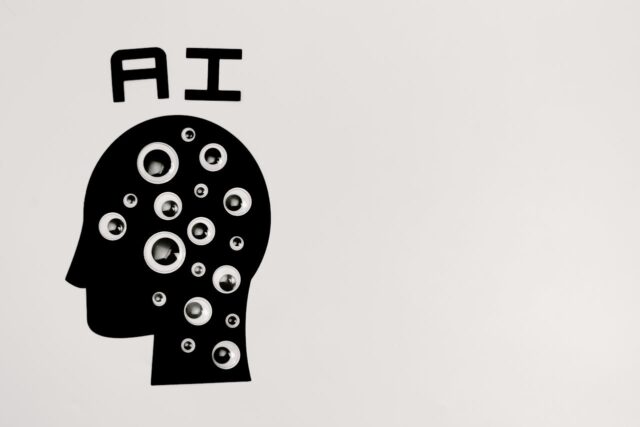Artificial intelligence (AI) is no longer the stuff of science fiction it’s here, and it’s transforming everything from healthcare to entertainment.
But as AI continues to evolve, governments worldwide are grappling with a critical question: How do we regulate this powerful technology without stifling innovation?
The European Union (EU) has taken a bold step forward with its Artificial Intelligence Act (AI Act), but not everyone agrees on the best path forward.
By the way, if you want to stay connected and know everything about social commerce and never miss a beat, join Logie today! Click here
The EU’s AI Act
The EU has positioned itself as a global leader in AI regulation with its AI Act, which took effect in August 2024. This legislation ensures that AI systems are safe, transparent, and respectful of fundamental rights.
The Act categorizes AI applications based on risk levels. Unacceptable risk systems like those used for social scoring or behavior manipulation are outright banned due to their potential to threaten safety, livelihoods, or fundamental rights.
High-risk AI applications, often used in critical sectors such as healthcare, education, and law enforcement, face stringent requirements, including rigorous testing, documentation, and mandatory human oversight to prevent misuse.

Systems with limited risk, such as chatbots, must maintain transparency, ensuring users know they are interacting with AI. In contrast, minimal-risk applications like spam filters are subjected to fewer restrictions.
The AI Act also imposes hefty fines for non-compliance, signaling that the EU is serious about ethical AI. While praised for its comprehensive approach, some critics argue that the Act’s strict guidelines could stifle innovation, particularly for startups and smaller companies trying to scale AI solutions globally.
Global Reactions
The EU’s stringent regulations have sparked a global debate on balancing innovation and ethical oversight. Aiman Ezzat, CEO of Capgemini, voiced concerns that the EU may have “gone too far,” warning that inconsistent regulations across countries could complicate the global rollout of AI technologies.
He emphasized the need for international standards to avoid regulatory fragmentation, which could burden multinational corporations with compliance hurdles in different jurisdictions. Meanwhile, the United States is taking a contrasting approach.
At a recent AI summit in Paris, U.S. Vice President JD Vance advocated for minimal regulatory intervention, arguing that too much oversight could hinder innovation. “We need to let AI flourish,” he said, “while ensuring it’s used responsibly.”
This divergence reflects a fundamental tension: how do we balance the need for ethical safeguards with the freedom to innovate? While the EU emphasizes precaution, the U.S. leans into flexibility, hoping to maintain its competitive edge in AI development.
The UK’s Middle Ground
The United Kingdom is carving its path in the AI regulation landscape, adopting a more pragmatic approach to balancing innovation with ethical considerations. The UK government plans to introduce AI legislation in 2025 that makes voluntary agreements with AI developers legally binding.
This means that commitments previously made in good faith will now carry legal weight, ensuring accountability. Additionally, the UK is granting independence to the AI Safety Institute, an organization tasked with assessing and mitigating AI risks.
This move aims to foster an environment where AI can thrive while upholding safety and ethical standards. By avoiding the extremes of the EU’s strict regulatory framework and the U.S.’s laissez-faire attitude, the UK hopes to position itself as a global hub for responsible AI development.
The Human Side of AI Regulation
Behind the policy debates and legal frameworks are real people whose lives could be directly impacted by AI regulations. Consider a small startup developing an AI tool to detect early signs of cancer.
Under the EU’s AI Act, this tool would fall under the “high-risk” category, requiring extensive testing, certification, and documentation before being brought to market. While these measures are designed to protect patients and ensure the tool’s reliability, they could also slow down the startup’s ability to deliver potentially life-saving technology.
Conversely, AI systems risk perpetuating biases, invading privacy, or spreading misinformation without proper regulation. For instance, the rapid rise of deepfake technology has already been used to manipulate political discourse, create fake news, and harass individuals.

Regulations like the EU’s AI Act aim to curb such abuses, but they also raise questions about enforcement, global consistency, and unintended consequences that might hinder technological progress.
The Road Ahead
As AI advances at an unprecedented pace, the global regulatory landscape remains fragmented. The EU’s AI Act sets a high bar for ethical AI, but other regions still figuring out their approach.
This lack of harmonization could create significant challenges for multinational companies that operate across borders, as they’ll need to navigate a complex web of differing regulations. Experts argue that international collaboration is key to avoiding this regulatory patchwork.
Organizations like the United Nations and the OECD are working to establish global AI principles.
Still, progress has been slow due to competing national interests and differing views on data privacy, ethics, and innovation. In the meantime, businesses and governments are left to chart their courses, often resulting in inconsistent rules that complicate AI development and deployment on a global scale.
What This Means for You
Whether you’re a tech enthusiast, a business owner, or someone who uses AI-powered tools daily, these regulatory developments have far-reaching implications. Staying informed about regional regulations is crucial for businesses to avoid legal pitfalls and ensure compliance.
Investing in ethical AI practices isn’t just about following the rules it’s also a way to build trust with consumers and stakeholders. For consumers, awareness is key. Understanding how AI is used in products and services you rely on, from personalized ads to healthcare diagnostics,s can help you make informed decisions and advocate for greater transparency.
For policymakers, the challenge lies in crafting legislation that protects citizens’ rights without stifling technological innovation. Prioritizing international cooperation will be essential to creating consistent, practical standards that can keep pace with rapid advancements in AI.
The AI revolution is here, reshaping our world in ways we’re only beginning to understand. The EU’s AI Act is a bold step toward ensuring this transformation is ethical and responsible, but it’s just the beginning.
As governments, businesses, and individuals grapple with the challenges and opportunities of AI, one thing is clear: the stakes are high, and the decisions we make today will shape the future of this powerful technology. Ultimately, it’s not just about regulating AI it’s about creating a future where innovation and ethics go hand in hand. That’s a goal worth striving for, requiring collaboration, foresight, and a shared commitment to using technology as a force for good.











